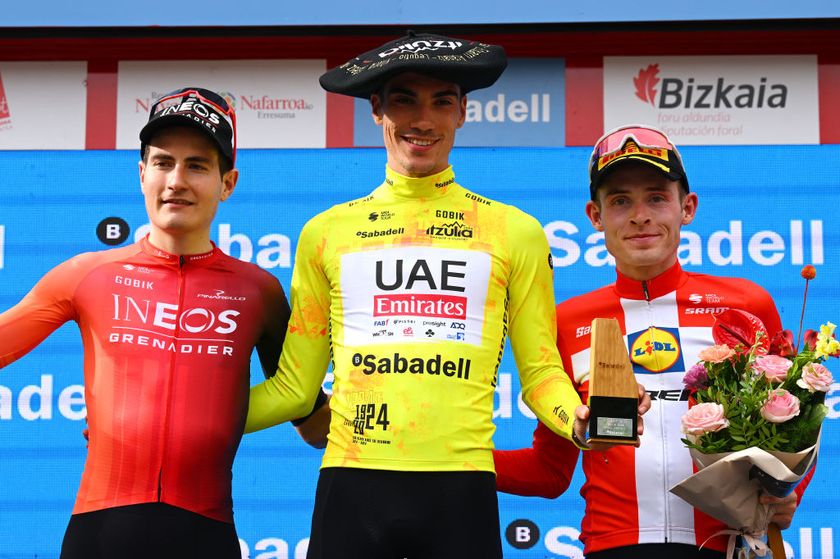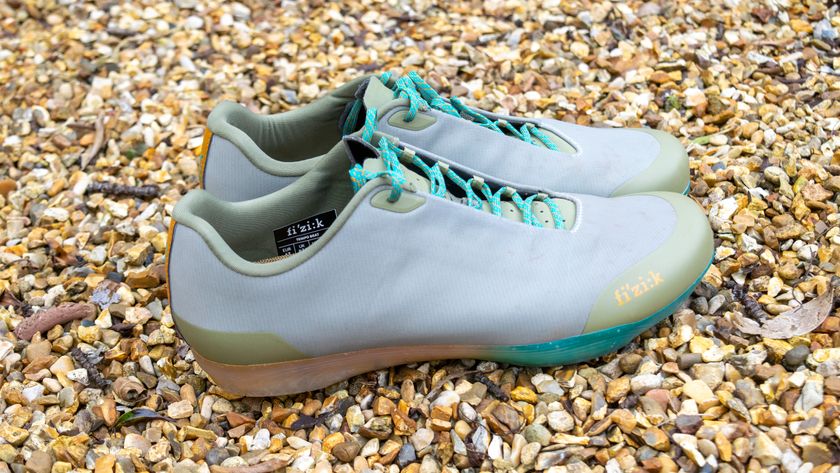Cyclingnews Verdict
A lightweight, aerodynamically designed helmet that can double up for use on both the road and mountain bike trail - the MIPS and protection measures work superbly well, too
Pros
- +
Lightweight structure
- +
Attractive and sculptural aesthetics
- +
Good comfort and adjustability
- +
Impressive all-round head coverage
- +
MIPS slip-liner for rotational impact protection
- +
Obstructing strap management
Cons
- -
None
You can trust Cyclingnews
It's easy to fall prey to the marketing hype spewed forth by cycling equipment manufacturers - after all, when it comes to aspects such as safety claims, this can become a very difficult area to quantify, especially pertaining to the best road bike helmets. Apart from attributes such as fit, comfort and ventilation, there's not much we as journalists can add to our assessments without genuinely doing our very own independent crash testing, but that's a specialised field on its own. Of course, there's the Virginia Tech Helmet Rating, which has become a wealth of information in terms of evaluating the crash effectiveness of helmets.
Nothing, however, truly speaks more truth than an actual crash test in real-world conditions, something I experienced at the Pippingford Park leg of the Southern XC MTB series back in June this year.







Design, aesthetics and specifications
Penned by acclaimed former car designer Filippo Perini, the Met Rivale MIPS is one of the most beautiful road bike helmets in the segment. According to Perini, the similarities between cars and helmets are different in many ways but when it comes to functionality they're the same - especially around attributes such as aerodynamics, ventilation, cooling, structure and weight reduction. And you can see these properties have played out within the design blueprint of the Rivale pictured here.
It's both sculptural and functional and these two areas play off each other. The helmet is available in seven colours - and enough variety to sate the needs of all cycling fashionistas. Our initial test sample came in a colour Met calls 'red metallic glossy' - a bold hue that may not be to everyone's taste but a vivid option nonetheless. There is a more stealthy black matte-glossy option on offer as well as a black red metallic colourway, the latter of which would be my crash replacement livery.
As previously mentioned, aerodynamics are a crucial part of Met’s design ethos, with the Rivale’s airflow regarded as a total system. As such, the size of the signature topside NACA vent has increased and works in tandem with the airflow characteristics of front ports. Beyond its bold styling, the Rivale MIPS also benefits from the Safe-T Upsilon retention system and Air Lite straps with adjustable cam dividers. Strap management is excellent and worked superbly against my facial contours with no excess strapping. To get the strap setup just right will rely on whether or not you opt for the correct helmet size, of which there are three options: small, medium and large.
In terms of weight, the Rivale MIPS tipped our scales at 240g for a medium, which comes in at 10g under the quoted weight.

Riding and crash experience
The Met Rivale MIPS is an incredibly comfortable helmet. At 240g (medium), it's neither heavy nor bulky - instead, its svelte contours and form belie the protection measures it offers. The aerodynamically honed shape features 18 ventilation ports, so cooling is well taken care of and heat soak is not an issue. The front vents double up to offset the restrictive nature of the MIPS-C2 liner and offer a place to stow your sunglasses, too.
Having tested this helmet for much of the warmer weeks preceding my crash, the ventilation was top class with no sweat making its way onto my brow or eyes. In terms of the retention system, the fit of my medium sample was comprehensive and cosseting thanks to the incremental adjustments afforded by the 360-degree headbelt. This in combination with the mesh padding cushions around the brow and cranial area supplied an appreciably comfortable fit - so good in fact, that at times, it felt as if I wasn't wearing a helmet.
Owing to its impressive all-round attributes, it became my go-to lid for all disciplines including mountain biking. While some riders prefer using discipline-specific helmets, as a cross-country rider I prefer the unobstructed shape and cooling properties of a road helmet and many multi-discipline riders share my sentiments. As such, I used the Met Rivale MIPS in a cross-country race, the Pippingford Park leg of the Southern XC series. While it wasn't my plan to crash-test the Rivale MIPS, somewhere on the course during a testosterone-fuelled duel for a narrow wooden bridge, another rider collided with me at high speed sending me over the bars head first into terra firma.



I knew immediately it was a hard shunt as the helmet - while still affixed to my head - was at an oblique angle and the retention system had fallen out of the front into my line of sight. I had also seriously grazed my cheek but the helmet took the bulk of the impact with my bike and rest of my body seemingly unscathed. I was a bit dazed but not confused and somehow managed to still finish the race. Upon crossing the line, I immediately went in search of the medics who performed a baseline concussion examination on me as well as checked my vitals. According to the medics, save for a grazed and bruised cheekbone, I was neither concussed nor badly injured and was given the all-clear.
Upon examining the helmet, it was clear it had done its job. The entire front right side was split in half and held together by the polycarbonate shell exterior. There was grass shoehorned into some of the cracks and the MIPS liner was out of place and twisted off centre. Other than that, the retention system had unclipped from the impact and dropped out of the helmet. Surprisingly, I had no strap burn on my neck or behind my ears - the straps are essentially what keeps the helmet on the head and they did nothing to inhibit the way it performed.
I relayed the news of my crash to the Met head office who asked for the helmet to be sent to the company's internal laboratory for the engineers to conduct a report which can be seen in the paragraph below.

Crash report
According to Met, the Rivale MIPS did exactly what it was designed to do.
"The helmet showed an optimal response during the heavy impact (we defined it as 'heavy', since noticeable traces of terrain were found in the helmet polycarbonate shell parts)," said Ulysse Daessle, Met Media and PR manager.
"The EPS liner cracked, helping to reduce the impact energy transmission to the head of the rider, working accordingly to the expected driven cracking (identified during the conception phase and in our laboratory testing phase). This cracking leads to opening the bottom part of the shell, and at the same time keeping the whole integrity of the helmet structure."
"The helmet retention system is still totally functional, preserving the stability of the helmet on the head during the impact, and during the rebound that occurred after the first impact on the ground."
"The MIPS system worked properly to prevent the effect of the rotational component of the impact forces."
Verdict
You can't put a price on your life and I'm certain without the Met Rivale MIPS on my head during the crash, things could have been a whole lot worse. While many of the best road bike helmets all boast similar levels of safety and protection, I've always had an affinity for the Met brand as a whole - the helmets look superb and the after-sales service and communication levels are some of the best I've dealt with in the industry.
In terms of pricing, the Met Rivale MIPS will set you back £140 / $150 / €150 placing it squarely in the middle of the pricing spectrum of the best road bike helmets. While helmets represent a subjective choice, I highly recommend the Met Rivale MIPS - not just because of its tasteful-yet-refined looks and impressive levels of comfort but more because of how it protected me during a high-speed crash and that I lived to tell the tale.
It's a helmet I'll gladly recommend to my family and loved ones, and buy with my own money.
Tech Specs: MET Rivale MIPS helmet
- Price: £140 / $150 / €150
- Weight: 240g (actual, medium)
- Rotational safety: Yes, MIPS
- Retention: Safe-T Upsilon system
- Aero: Yes
- Sizes: S, M, L
- Colours: 7
Aaron was the Tech Editor Cyclingnews between July 2019 and June 2022. He was born and raised in South Africa, where he completed his BA honours at the University of Cape Town before embarking on a career in journalism. Throughout this career, Aaron has spent almost two decades writing about bikes, cars, and anything else with wheels. Prior to joining the Cyclingnews team, his experience spanned a stint as Gear & Digital editor of Bicycling magazine, as well as a time at TopCar as Associate Editor.
Now based in the UK's Surrey Hills, Aaron's life revolves around bikes. He's a competitive racer, Stravaholic, and Zwift enthusiast. He’s twice ridden the Cape Epic, completed the Haute Route Alps, and represented South Africa in the 2022 Zwift eSports World Championships.
Height: 175cm
Weight: 61.5kg
Rides: Cannondale SuperSlice Disc Di2 TT, Cannondale Supersix Evo Dura-Ace Rim, Cannondale Supersix Evo Ultegra Di2 Disc, Trek Procaliber 9.9 MTB













